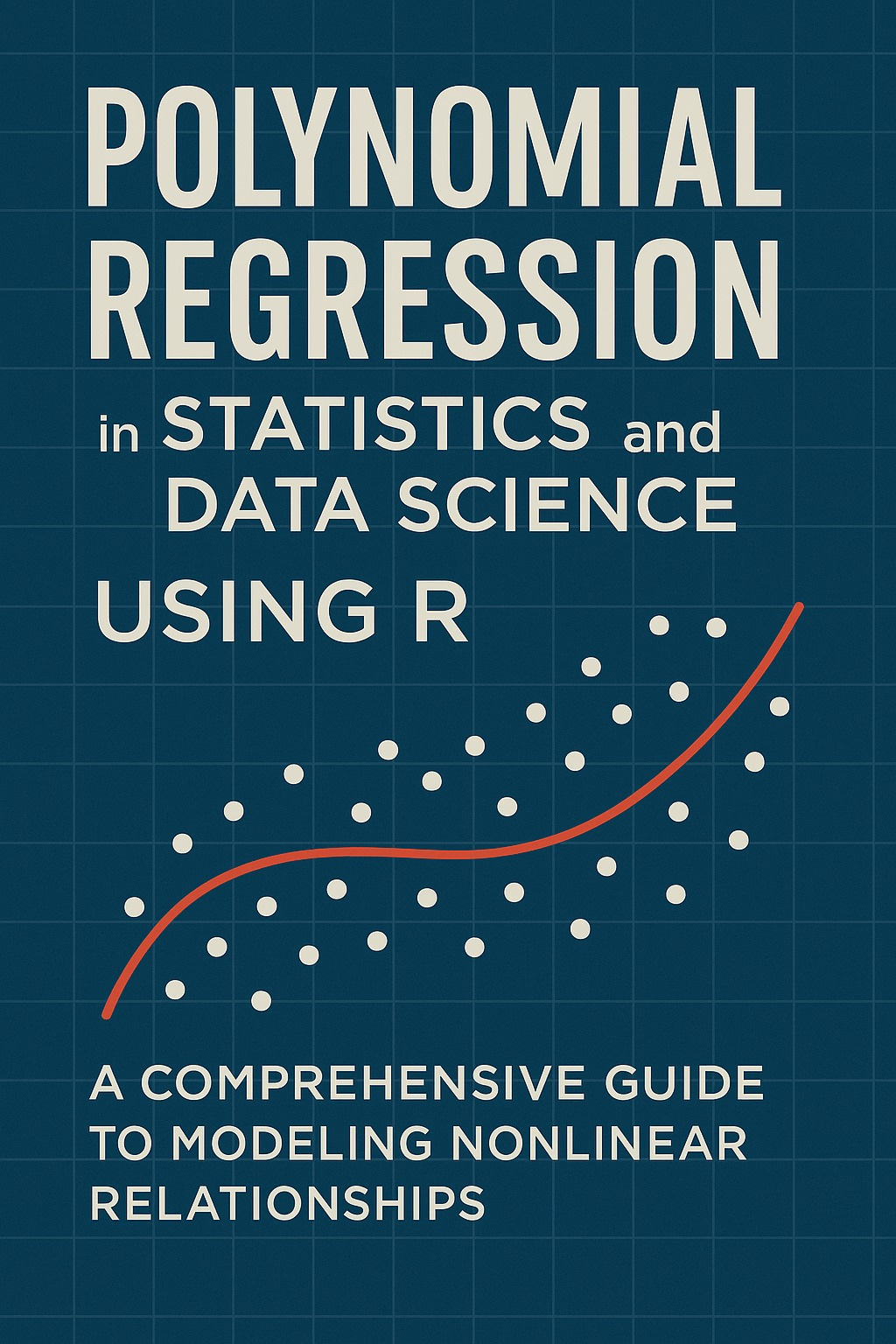Polynomial Regression in Statistics and Data Science Using R: A Comprehensive Guide to Modeling Nonlinear Relationships
This article demonstrates how to use polynomial regression in R to model, interpret, and visualize nonlinear relationships, equipping data scientists and statisticians with practical tools for advanced curve fitting and analysis.
Article Outline:
Introduction Explain the role of polynomial regression as an extension of linear regression for modeling nonlinear relationships in statistics and data science. Highlight the power and accessibility of R for statistical modeling, visualization, and interpretation.
Understanding Polynomial Regression Define polynomial regression, its mathematical formulation, and how it enables capturing curvature and turning points that linear models cannot. Explain the difference between linear and polynomial regression in terms of model flexibility.
Applications of Polynomial Regression in Data Science Discuss real-world scenarios—curve fitting in scientific experiments, capturing growth or decay trends, economic forecasting, and feature engineering in machine learning. Emphasize interpretability and diagnostic utility.
Preparing Data for Polynomial Regression in R Describe the structure of the required dataset (predictor and outcome variables) and illustrate how to engineer polynomial features in R using built-in functions.
Fitting a Polynomial Regression Model in R Walk through the process of fitting a polynomial regression model using R’s
lm()function, including specifying polynomial terms, extracting coefficients, and summarizing the model.Evaluating Model Fit and Diagnostics Explain how to assess model quality with residual analysis, R-squared, and visualizations. Discuss the importance of checking for overfitting and selecting an appropriate degree.
Visualizing Polynomial Regression Results in R Show how to plot data points, the fitted polynomial curve, and diagnostic plots using
ggplot2or base R graphics to aid interpretation and presentation.Limitations and Best Practices Discuss pitfalls such as overfitting, extrapolation risks, and multicollinearity among polynomial terms. Offer guidance on degree selection and validation.
Conclusion Recap the strengths and practical value of polynomial regression for discovering nonlinear patterns in data, and encourage its use as a foundational tool in data science.
Subscribe to download the full article …
Keep reading with a 7-day free trial
Subscribe to AI, Analytics & Data Science: Towards Analytics Specialist to keep reading this post and get 7 days of free access to the full post archives.




